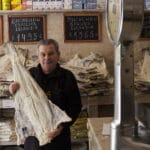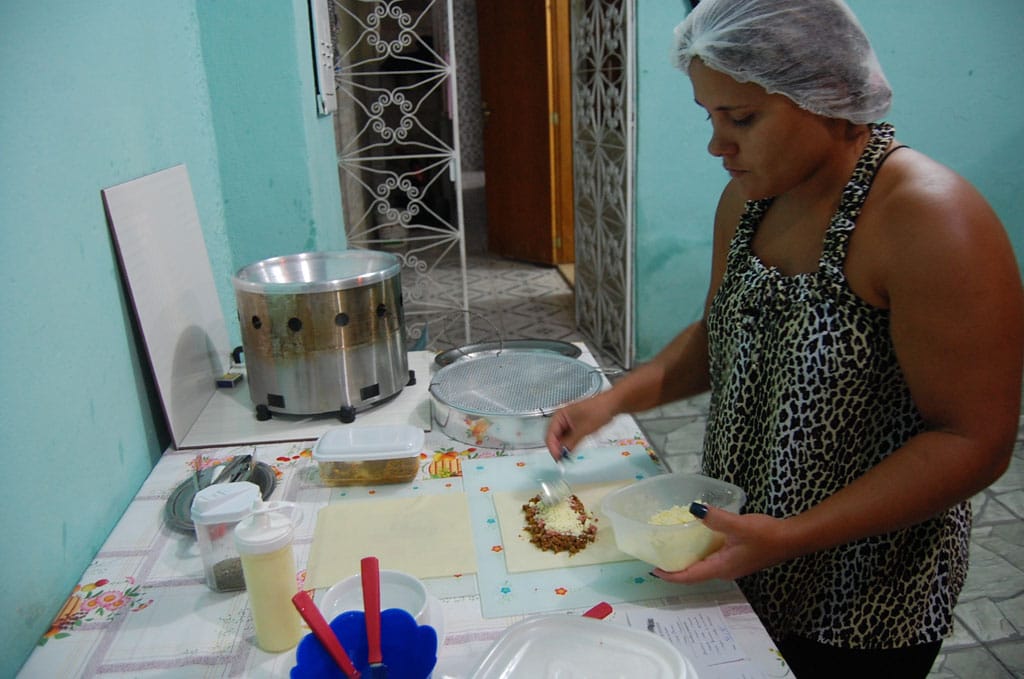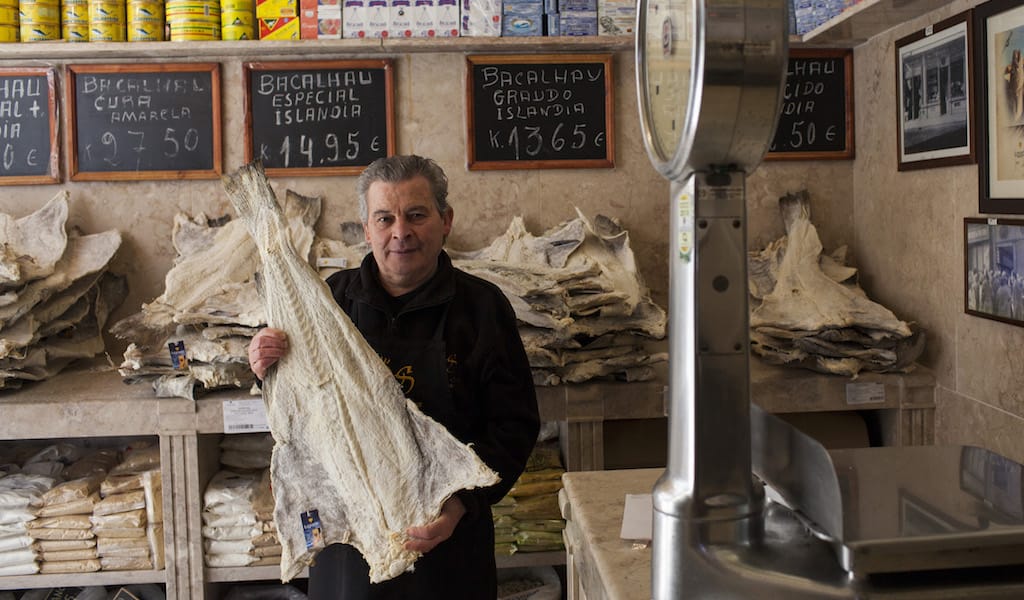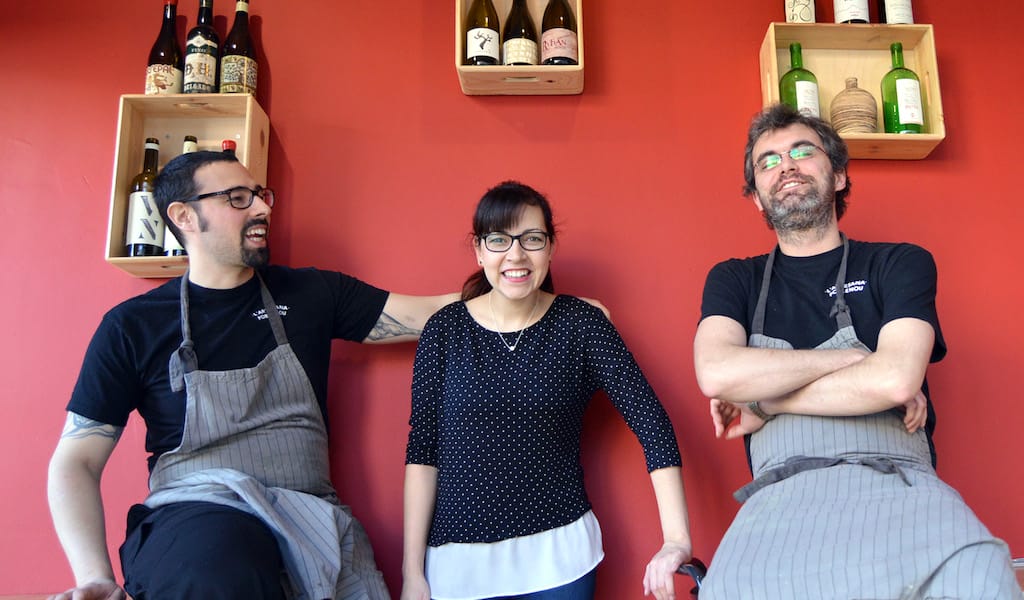Lisbon seems to be getting its groove back. Or at least, more people are taking notice of this city’s unique character and clearly taking to it. Recently, Vogue and The New York Times profiled the Intendente district, an up-and-coming neighborhood in the city center; Monocle magazine held its first “Quality of Life” conference in Lisbon; and many friends of ours, from Istanbul to San Francisco, are sharing beautiful photos of their latest trip to the city. Oddly, in a city on the upswing with such a rich culinary heritage, we found there was little storytelling on the subject of food and how it impacts Lisbon’s urban culture, be it in print, on the Web or on the ground (as in a tour or other guided experience).
Over the past couple of years, we ourselves have joined this stampede of visitors to Lisbon and we can’t get enough of it. Now it’s time to share our enthusiasm for the city with others. Working with Célia Pedroso, chief of our newly created Lisbon bureau, we’ve collected our favorite experiences into a marathon of backstreet eating spanning the seven hills of Lisbon.
The oldest city in Western Europe, once the hub of a trading empire that connected Macau in the east to Rio de Janeiro in the west, Lisbon today feels staunchly Old World European, a sleepy town of nostalgic storefronts and scenic churches. But that’s only its façade. Take a closer look and you’ll discover a city that still maintains deep-rooted links around the world – just consider the local obsession with African piri piri sauce – and that is a vital and cutting-edge place with packed restaurants and bar-lined streets.
On “Lisbon Awakens: A Culinary Crossroads, Reborn,” our new walk in the Portuguese capital, we will explore the hilly backstreets of this enchanting city in a delicious attempt to unravel the complex identity of Lisbon and its inhabitants, the Lisboetas. We’ll start in some classic downtown spots for a coffee and savory pastries, followed by a shot of ginjinha, a smooth sour-cherry liqueur that is a traditional local eye-opener. At one of Lisbon’s oldest and finest charcuteries, we’ll sample presunto pata negra, cured ham made from the acorn-fed black-hoofed pig unique to the Iberian Peninsula. In a time-honored neighborhood joint, we’ll taste shining examples of conservas (tinned tuna and sardines), humble yet delicious dishes that offer a fascinating window into Portugal’s history and its deep connection to the sea, and how both still influence contemporary culture. We’ll stop by the restaurant of a Michelin-starred chef for his take on the classic Portuguese meat-filled pastry, pastéis de massa tenra, before making our way to a tasca, a type of no-frills neighborhood restaurant that is beloved by Lisboetas. There will be wine tasting, starring the fresh and effervescent vinho verde and, later, a distinct moscatel, paired with signature Portuguese cheeses.
Finally, on this daylong tour with more than a dozen stops, we’ll make our way down to the historic Mercado da Ribeira, Lisbon’s former wholesale food market, recently redeveloped to host a gourmet hall where some of the city’s best kitchens work side by side. Here we’ll dig into some of the finest renditions of Portuguese cuisine, such as the peixinhos da horta, the probable ancestor of modern-day Japanese tempura, and, when in season, the pride of Portugal: fresh sardines. The city’s forward-looking culinary talent, employing both traditional and updated recipes, seems right at home here among the crusty fishmongers and old-time butchers, the grannies selling snails and piles of bay leaves. Like the other stops on our walk, this is yet another great spot in Lisbon where past and present, near and far, meet and become deliciously entwined.
 May 10, 2016 Pastel da Carmen
May 10, 2016 Pastel da Carmen
Carmen and Eduardo’s story could be an allegory for the rise and uh-oh moment of […] Posted in Rio December 2, 2022 Bacalhau
December 2, 2022 Bacalhau
The black-and-white photo shows a crowd, a policeman and José Martins holding a piece of […] Posted in Lisbon February 15, 2018 L’Artesana
February 15, 2018 L’Artesana
Years ago, when it was a booming industrial center, Poblenou saw thousands of workers […] Posted in Barcelona
Published on February 11, 2016
Related stories
See a real side of a favela on our Culinary Soul of Old Rio walk!
May 10, 2016
RioCarmen and Eduardo’s story could be an allegory for the rise and uh-oh moment of Brazil’s new middle class – except their tale is a real one, one that ends with a really nice savory fried pastel that’s become a midnight munchie hit with their neighbors in Rio’s iconic City of God (Cidade de Deus)…
December 2, 2022
LisbonThe black-and-white photo shows a crowd, a policeman and José Martins holding a piece of salted cod, all crammed together in Manteigaria Silva, a small, historic shop in Baixa. It’s from a newspaper clipping dated December 10, 1977 – Christmas season. That year Portugal experienced a shortage of bacalhau, the beloved salt cod that was (and…
February 15, 2018
BarcelonaYears ago, when it was a booming industrial center, Poblenou saw thousands of workers stream in every day to toil away at one of several factories in the neighborhood. Hearty fare was required to keep them going – sure, taste mattered, but sustenance was the most pressing concern. Poblenou may no longer be filled with…
















































































